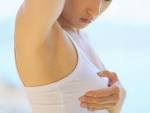 Breast cancer is detected early recovery is likely to be even greater. Tests carried out is not expensive and not difficult, therefore identify the characteristics of breast cancer. Currently, breast cancer is still the second highest rank suffered by women after cervical cancer. Therefore it is important for women to be able to recognize the characteristics of early breast cancer, so that if found in early stages of recovery is high chance. The main key to watch out for is if someone finds a permanent lump is painless (Painless). Because malignant tumors are usually painless. One way to detect early breast cancer is to do a Breast Self Examination conducted a week after menstruation. A week after the menstrual period is appropriate because at that time the hormones estrogen and progesterone are at low levels. Hormones estrogen and progesterone control and affect large or small breasts.
Breast cancer is detected early recovery is likely to be even greater. Tests carried out is not expensive and not difficult, therefore identify the characteristics of breast cancer. Currently, breast cancer is still the second highest rank suffered by women after cervical cancer. Therefore it is important for women to be able to recognize the characteristics of early breast cancer, so that if found in early stages of recovery is high chance. The main key to watch out for is if someone finds a permanent lump is painless (Painless). Because malignant tumors are usually painless. One way to detect early breast cancer is to do a Breast Self Examination conducted a week after menstruation. A week after the menstrual period is appropriate because at that time the hormones estrogen and progesterone are at low levels. Hormones estrogen and progesterone control and affect large or small breasts. Breast Self-Examination is to do the following:
- Note the position of the breast with both hands above his head and then his hands around her waist.
- Raise your left hand to the head.
- Use the flat surface of the finger to touch or squeeze the breast and be sure to touch allparts of the breast. Patterns can be used to rotate the direction of movement, direction of movement up and down or in and out of the area towards the nipple. Try using the same motion every month.
- Press each nipple gently and consider whether there is discharge.
- Check out the area between the breast and the underarm and breast and sternum while lying down.
- Repeating these steps for all of the right breast.
This can be done by a person standing in front of the mirror at a position slightly bent. Then in a hanging position, normal conditions are right breast should be higher than the left breast. In addition to checking whether or not the surrounding breast lump, can be done by touching the breast in a circle at the position counter-clockwise starting from the nipple up to the outside.
If someone has a disorder in her breast, it will display the following signs:
- If the breasts are pressed, it will be a milky white discharge that does not smell but no the pain.
- Breast skin looks like an orange peel, which is shrinking the skin pores are slightly prominent.
- There is a bump that is always found when checking out in the area around the breast or under the armpit.
"If you find any disturbances or problems in the breast, then you should immediately consult a doctor. Usually the doctor will conduct further tests such as breast ultrasound, if the result is still doubt it will be followed by mammography to determine whether the tumor is benign or malignant." This check should be done at a young age of 20-30 years. But for women who are married, taking hormonal contraceptives, use silicone or plastic surgery on her breasts, should give more attention to the examination.





0 comments:
Post a Comment